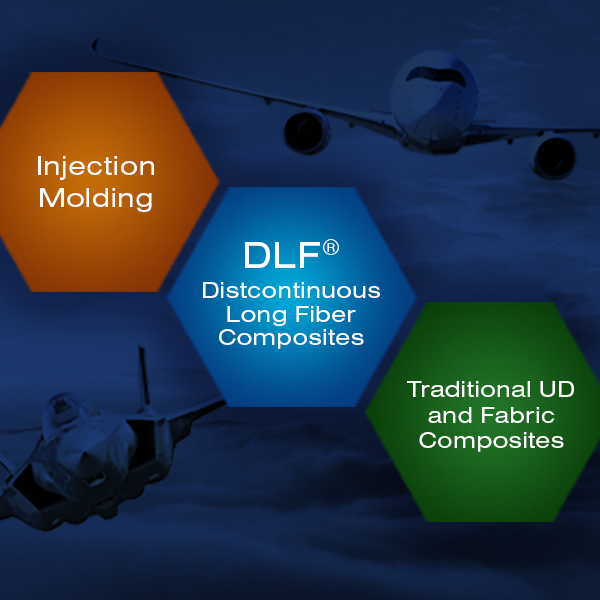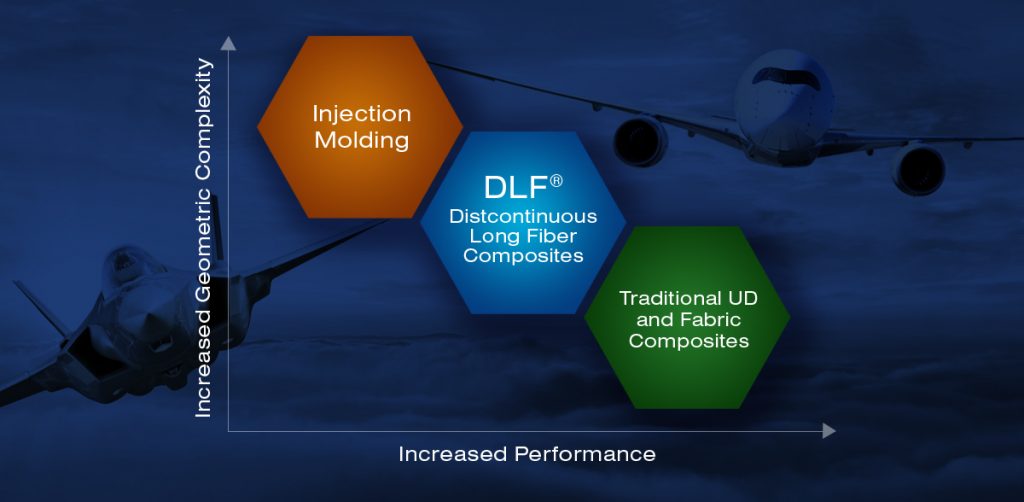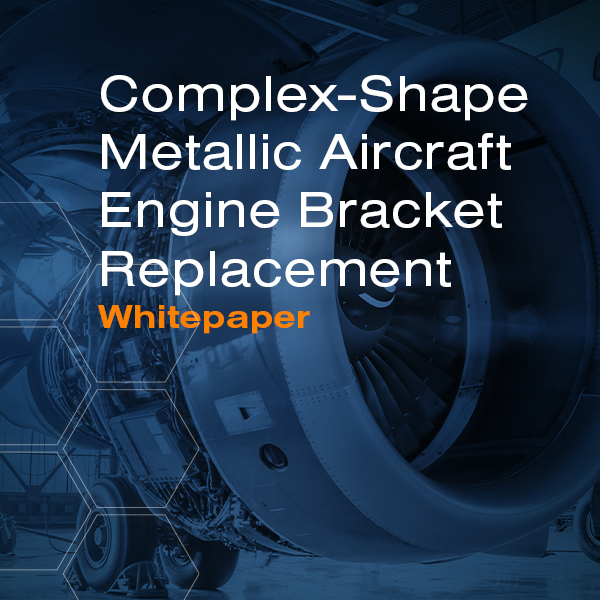Why Replace Metals with Compression Molded DLF Composites?

Composite materials continue to displace metals in new aerospace platforms due to their better performance, life cycle, and manufacturing advantages. Composites are commonly specified for large primary and secondary structure applications, because they are more cost-effective, thanks to weight reduction, design freedom, and longer service life. However, many metallic components still remain on the aircraft, at least in part due to a product capability gap for metal-replacement of 3D complex-shape parts, such as structural brackets, fittings, clips, or other components where injection molding lacks sufficient performance, but use of traditional continuous fiber composite materials is impractical (or impossible) due to the complex component geometry.
Discontinuous Long Fiber
Compression molded Discontinuous Long Fiber (DLF) composites materials are targeted to fill the metal replacement application gap for semi-structural or structural complex parts. DLF materials are produced by chopping high-fiber content, aerospace-qualified, unidirectional prepreg tape into “flakes” or “chips.” The “flakes” are weighed and loaded into the compression mold cavity. Heat and pressure from the molding process is used to melt the thermoplastic matrix for flow. The high viscosity of PEEK thermoplastic resin carries the reinforcement fibers uniformly throughout the mold, resulting in a random-fiber-oriented composite with consistent fiber/resin fraction. Highly complex shapes can be produced in this process without the need for traditional hand lay-up procedures, and many components can be molded net or near-net shape with reduced machining and finishing requirements. Threaded inserts, bushings, or other metallic components can also be incorporated into the molding process, further reducing the need for secondary operations.

What’s in the flakes?
Matrix polymers for DLF materials in Aerospace applications may be thermoplastic (typically PEEK or PEKK) or thermoset (typically epoxy). Greene Tweed has focused on the use of PEEK and PEKK thermoplastic matrix materials for our Xycomp® DLF™ material due to the following factors:
- Inherent thermoplastic matrix toughness for enhanced damage tolerance vs. epoxy
- Extremely low moisture uptake for minimal hot/wet effects compared to epoxy
- Excellent flame/smoke/toxicity performance, exceeding all FAA, EASA, and OEM requirements for Interiors applications
- Excellent fire performance, meeting 5-minute and 15-minute burn-through requirements
- Higher long-term service temperature capability vs. typical epoxy
- Excellent resistance to typical aerospace fluids
- High resin viscosity for minimal fiber/resin separation during processing and uniform fiber/resin distribution throughout final molded parts
- Ease of recycling, for waste materials and end-of-life environmental benefits
As the pace of composites adoption for aerospace structures continues to accelerate, there is a need for a cost-effective composite capability that allows further elimination of complex 3D-shape metal interfacing components while providing weight savings, corrosion elimination, parts-consolidation, and other identified composite benefits. Compression-molded DLF composites offer a viable production-ready option to address this “metal replacement gap,” with applications currently in production service on several major commercial aircraft platforms.
YOU MAY ALSO LIKE
